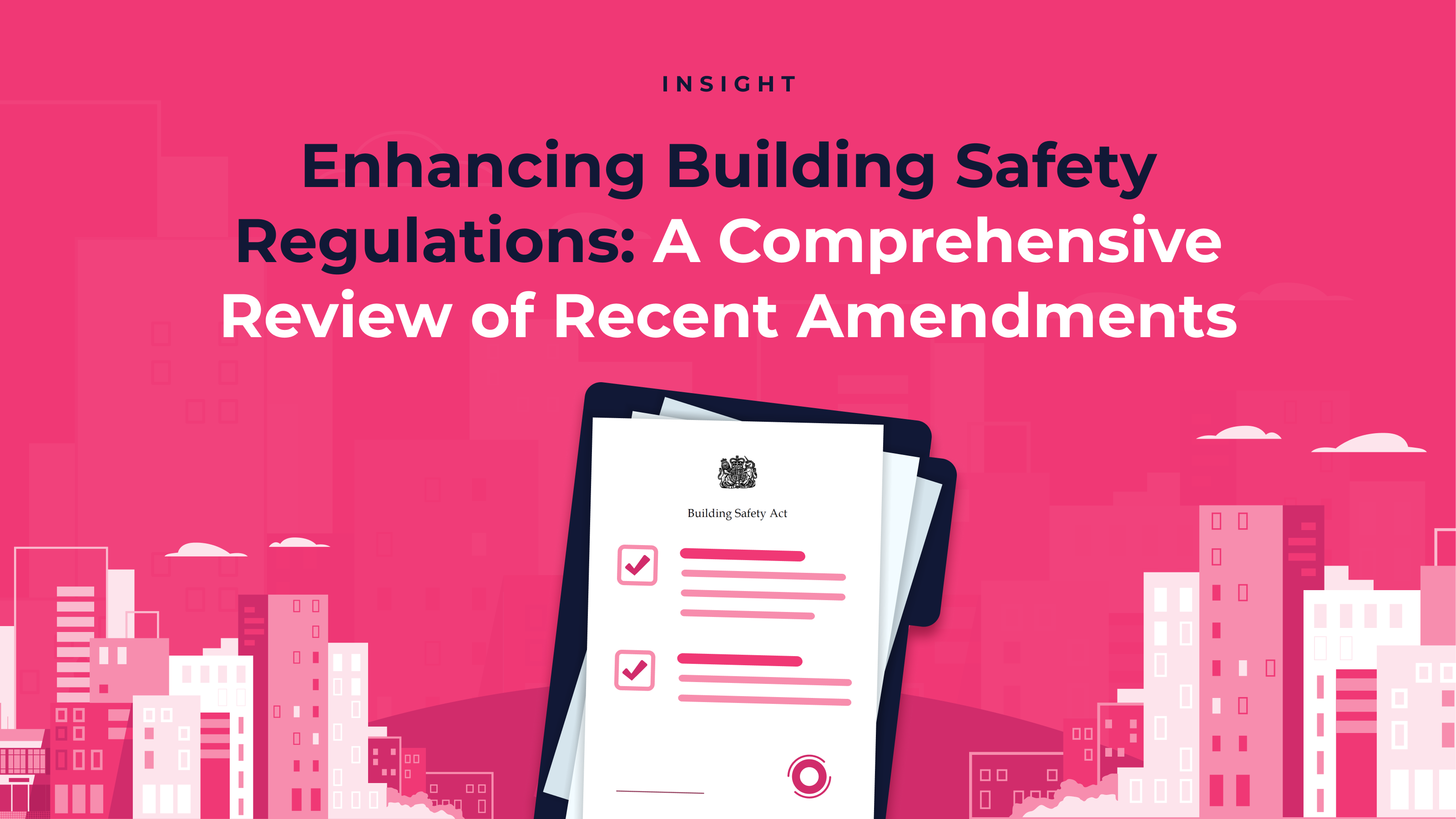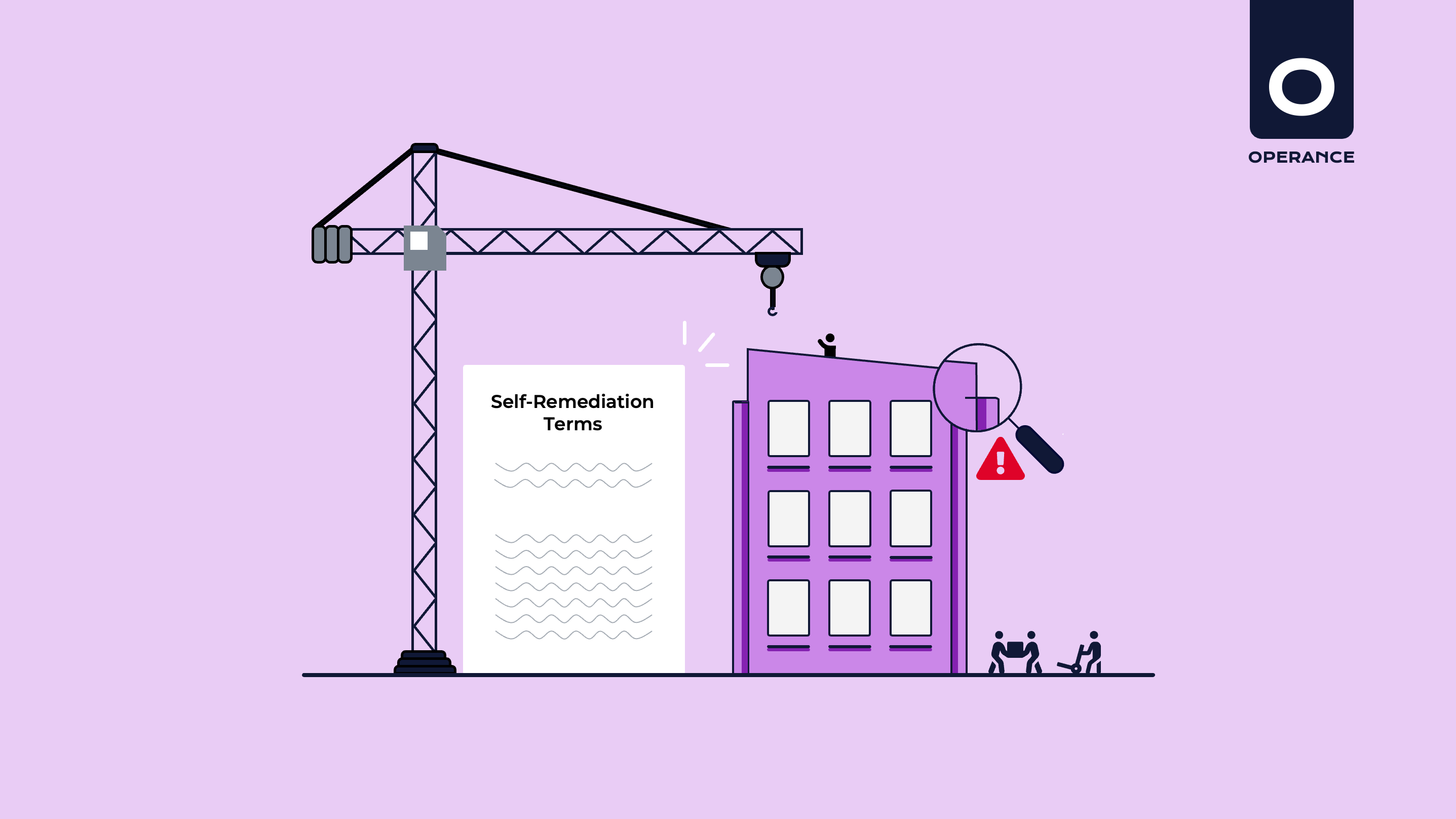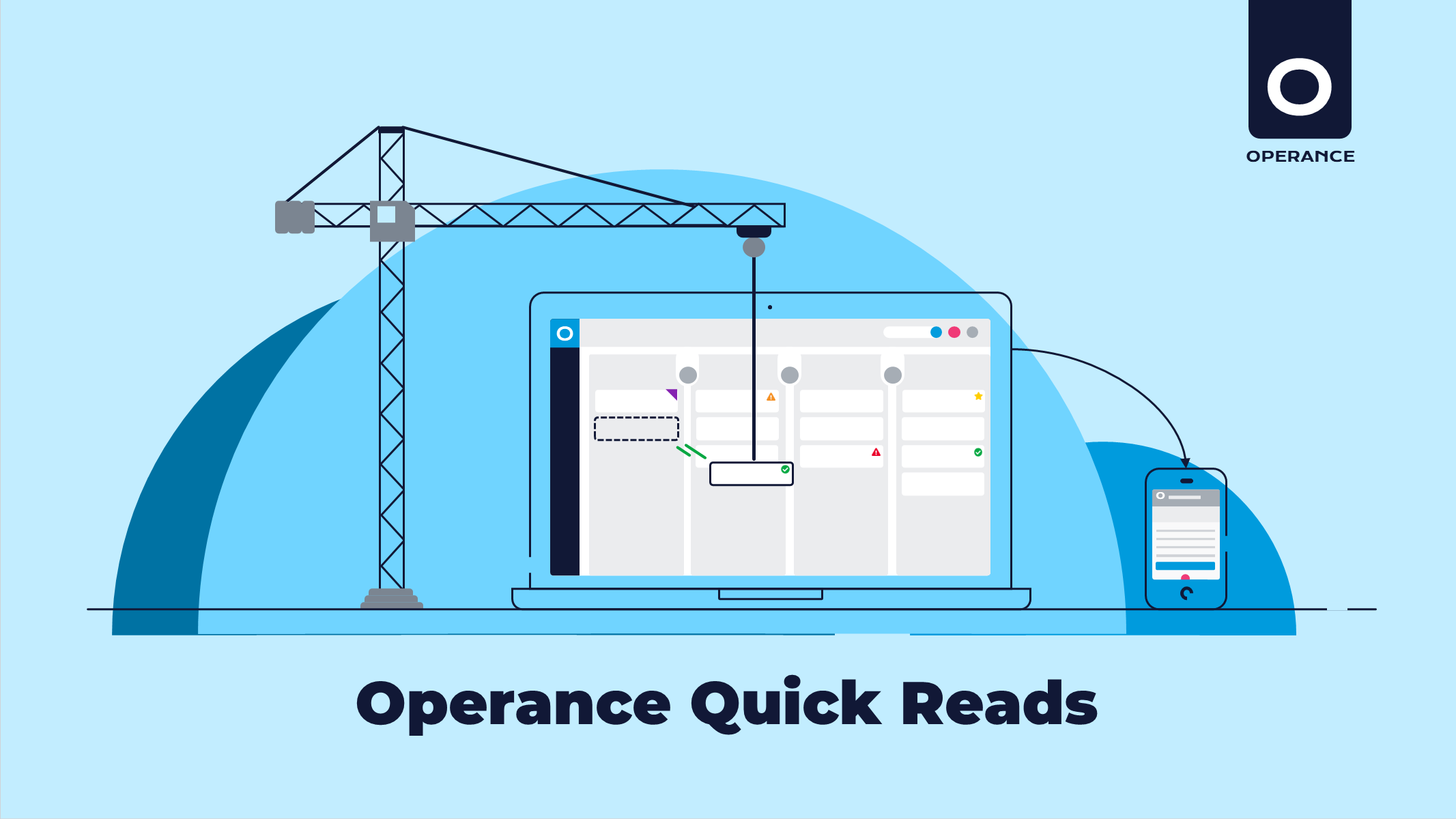A Contractor’s Guide to the Building Safety Act

Intro
The Building Safety Act is a crucial piece of legislation designed to improve safety measures and reduce fire risks in buildings.
At Operance, we speak to contractors from across the UK daily, and we’ve noticed that many still do not believe that the Building Safety Act applies to them specifically.
But, it absolutely applies to contractors!
And, if you fail to stay compliant, you could face legal repercussions.
In this guide, we break down the Building Safety Act and its importance for contractors, giving practical advice on achieving compliance.
- What is the Building Safety Act?
- Why is the Building Safety Act important?
- Who needs to comply with the Building Safety Act?
- How does the Building Safety Act apply to contractors?
- Which parts of the Building Safety Act apply to contractos?
- How can contractors comply with the Building Safety Act?
What is the Building Safety Act?
The Building Safety Act aims to improve building safety standards, particularly in residential high-rise buildings. Housing associations in the UK must develop and maintain a golden thread of information for all buildings within their portfolios that are over 18 meters tall or contain seven storeys or more (whichever is arrived at first)
Why is the Building Safety Act important?
Adhering to the Building Safety Act is essential for several reasons:
Protecting lives and property – The Act aims to enhance safety standards and ensure the wellbeing of occupants by minimising the risk of fire incidents.
Legal obligation – Contractors have a legal duty to comply with the Act, and failure to do so can result in legal repercussions, such as fines and prison sentences.
Reputation and trust – Compliance demonstrates your commitment to safety, highlighting your professionalism and reputation and building trust with current and potential clients.
Project success – The overall success of your project increases as you’re create safer buildings that meet higher safety standards.

Who needs to comply with the Building Safety Act?
The individuals or companies who must be compliant with the Building Safety Act are known as “dutyholders”.
During a project’s design and construction phase, the “dutyholders” are principal designers, designers, principal contractors, contractors and the client.
How does the Building Safety Act apply to contractors?
During the construction phase of the project, contractors are the ‘dutyholders’ and have an obligation to comply with the Building Safety Act.
Which parts of the Building Safety act apply to contactors?
Ensuring competence – You must ensure that individuals working under your control are competent and have the necessary skills, knowledge and experience to carry out their tasks safely and effectively. This includes things like providing appropriate training and supervision.
Cooperation and collaboration – You’re required to cooperate and collaborate with other dutyholders (for example, the principal designer and principal contractor). This includes sharing relevant information, coordinating your activities and ensuring the safe and effective management of the construction site.
Providing information – As a contractor, you need to provide necessary information about the building project to the other dutyholders. To give some examples: details about the design, construction methods, materials and any specific risks associated with the project. You also have a duty to make sure that information is accurate and up to date.
Compliance with Building Regulations – You have an obligation to comply with the applicable building regulations and ensure that the construction work meets the required standards. This includes adhering to fire safety regulations, structural stability requirements and other relevant provisions outlined in the Building Safety Act.
Safe construction practices – As a contractor, you must implement safe construction practices to prevent harm to workers, occupants and the public. Examples include following industry best practices, using appropriate safety measures, providing necessary safety equipment, and establishing procedures to manage risks effectively.
Reporting safety incidents – You have a duty to report safety incidents or near misses that occur during the construction process. Make sure you promptly inform the relevant authorities and other dutyholders about these incidents, as it helps in identifying and addressing potential safety risks.
Ensuring fire safety measures – You need to make sure that appropriate fire safety measures are in place during the construction phase. This includes installing temporary fire protection systems, maintaining clear escape routes and implementing measures to prevent the spread of fire.
Handover and documentation – After the construction phase is complete, you, as a contractor, are responsible for providing the relevant handover information and documentation to the building owner or client. For example, this may include Operations and Maintenance Manuals, as-built drawings and records of the completed works.
How can contractors comply with the Building Safety Act?
Above are the core requirements of the Building Safety Act for contractors, but you might be thinking, “where do I start?”
Here are some tips to help you stay compliant:
Familiarise yourself with the regulations – If you’ve made it this far through this guide, you’re halfway there! You can read the legislation here.
Collaborate with other dutyholders – Contractors aren’t the only ones who need to comply with the Building Safety Act. Maintain open communication and collaborate with building owners, architects, engineers and other professionals involved in the project.
Regularly inspect and test – Ensure fire safety systems and other safety equipment are functioning properly and in compliance with the Building Safety Act by conducting regular testing and inspections.
Keep accurate documentation – Maintain up-to-date and accurate documentation of all activities related to the Building Safety Act compliance. For example, records of inspections, certifications, maintenance activities and any modifications or changes made during the construction process.
Use smart O&M software – Building information software like Operance can do a lot of the heavy lifting for contractors when it comes to compliance with the Building Safety Act.
The app allows contractors to store, organise, maintain and share key building information, Operations and Maintenance manuals, handover files and much more.
You can upload an IFC model, COBie spreadsheet or a data template and are ready to go with an array of modules available to ensure that your building operations and safety stay maintained to a high standard and compliant with the latest regulatory changes.

NEWSLETTER
Revolution Is Coming
Subscribe to our newsletter so we can tell you all about it.
You can unsubscribe at any time and we don’t spam you.


















